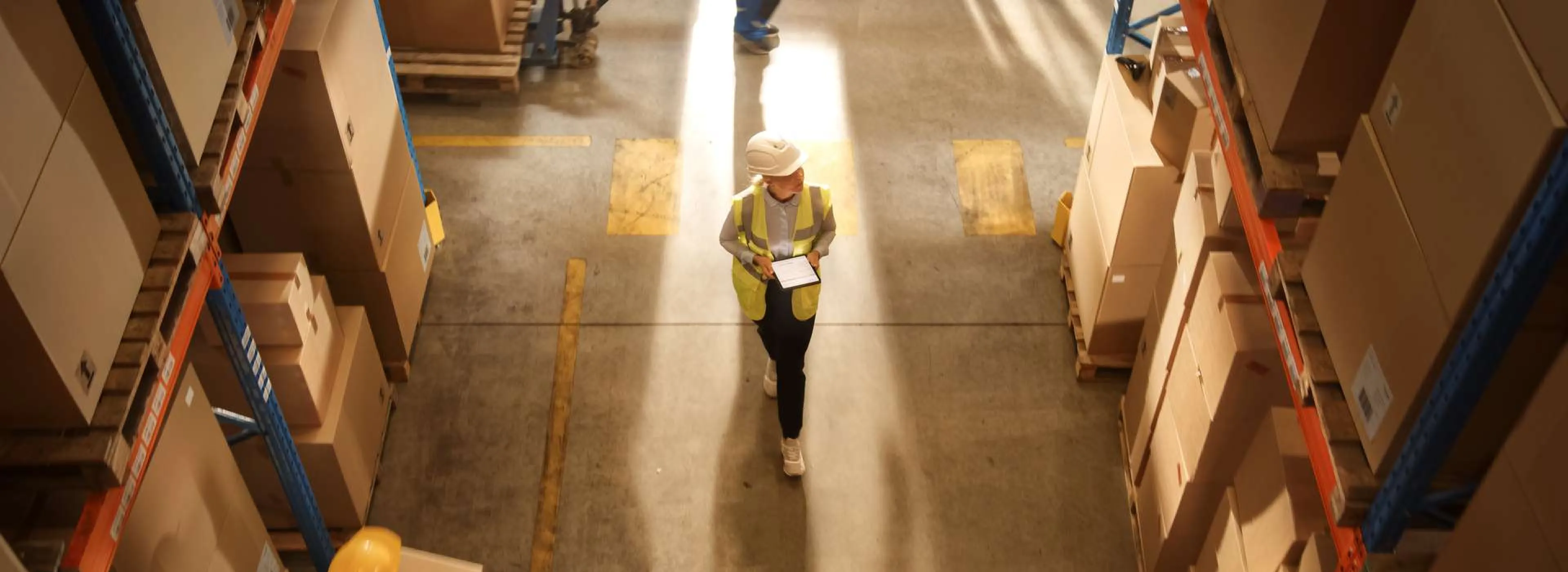With an increase in the demand for different types of warehouses, it’s crucial that businesses choose one that best fits their requirements and operations. But what exactly are the factors that lead companies to pick one type of warehouse over another? And what are all the types of warehouses in the market today?
Click Here: Improve Your Warehouse Efficiency With This Advanced and Affordable WMS
In this article, we will explain the necessity of different types of warehouses, the elements that differentiate each warehouse from the others, and part one of the various types of warehouses, along with their benefits. To see part two of this blog series, click here.
Why Are There Different Types of Warehouses?
Because many industries require warehousing, stored cargo varies in shape and size. Additionally, the demand for each product varies because of factors such as price, product type, lifespan, seasonality, and population growth. These variances compel warehouses to specialize in certain industries and/or products to meet the expected handling of the required cargo.
Listed below are the factors that differentiate the types of warehouses:
- Characteristics of products accommodated, such as size, weight, dimension, longevity, etc.
- The proximity of a warehouse to highways, railway stations, airports, and seaports.
- Type of equipment available to store, manage, and move goods.
- The amount of space needed for storage.
- Ability to store goods sensitive to environmental conditions, such as temperature and humidity.
- Facilities such as 24×7 security and fire-resistant.
- Processes to provide timely service.
- Proactive customer support.
- Alignment of the warehouse with different transport modes.
- Licenses and certifications to address trade permits and other legalities.
What Are the Different Types of Warehouses? (Part 1)
To help you familiarize yourself with the various types of warehouses, here is part one of the list, along with each type’s definitions and benefits.
Government Warehouses
These warehouses cater to the government’s storage needs but can also be used by the general public through rental. However, if a business cannot pay its dues on time, the government can recover its rent by selling off its goods. These warehouses are owned, managed, and operated by governments or public authorities.
Characteristics and benefits of these kinds of warehouses are as follows:
- Supply storage for local government facilities such as schools and offices.
- Strategically placed to provide storage for disaster supply kits during earthquakes, floods, droughts, etc.
- Affordable rent rates are charged by the government.
Bonded Warehouses
Bonded warehouses can store imported dutiable goods for a fixed amount without paying duties. When the goods are released for consumption, the payment of import duties, taxes, and other charges are collected by the proprietor who holds the liability. But when the goods are exported, drafted to be used in international traffic, or destroyed under the Customs and Border Protection’s supervision, liability is canceled, and no duties are collected.
Characteristics and benefits of these kinds of warehouses are as follows:
- If the goods don’t meet local demand, they can be exported and exempted from paying duties.
- As charges are not collected until the goods are released, it reduces the financial burden on the business for a period.
- A wide range of products can be accommodated.
- Most warehouses have alliances with freight forwarding companies, eliminating the hassle of managing the distribution and shipping logistics for the products.
Cross-Dock Warehouses
A cross-dock warehouse involves the transfer of goods from an inbound carrier to an outbound carrier, with little to no storage time. When goods arrive at a cross-dock warehouse, they go through the sorting process instead of getting stored. The large deliveries are broken up into groups according to their destination, usually the retail store, to be transported by a single truck. Without cross-docking, multiple trucks must deliver all the goods destined for one location.
Characteristics and benefits of these kinds of warehouses are as follows:
- Favorable shipping prices due to consolidated shipping, which eliminates the reliance on multiple shipping partners
- Lower inventory costs, as goods are shipped without being stored in the warehouse.
- Faster delivery and lower travel costs
- Reduced material handling costs and lower risk of product damage as goods are not passed through multiple warehouse stages
Temperature-Controlled and Climate-Controlled Warehouses
The terms “temperature-controlled warehouse” and “climate-controlled warehouse” are often used interchangeably, but these two types of warehouses are slightly different.
Temperature-controlled warehouses maintain the temperature within a set range so that the quality of the goods remains intact. These warehouses utilize strategically placed cooling or heating units, and the requirement can vary depending on factors such as seasons and the characteristics of the products stored.
Characteristics and benefits of these kinds of warehouses are as follows:
- Follow strict quality control processes to maintain the characteristics of sensitive products
- Preserve goods against extreme temperatures
Climate-controlled warehouses differ from temperature-controlled warehouses in that they have the ability to maintain airflow, temperature range, and humidity levels to preserve very sensitive products. These facilities have high-quality HVAC systems (heating, ventilation, and air conditioning), dehumidifiers, customizable thermostats, and heavy-duty insulation to ensure superior environmental quality. Usually, these warehouses are limited and expensive.
Characteristics and benefits of these kinds of warehouses are as follows:
- Eliminate the growth of mold and mildew that can damage goods made of wood and fabric
- Protect electronics and expensive paintings from extreme heat, cold, and humidity
- Deter invasion of any kind of dust or pest because they are well insulated from the outside environment
Hazardous Material Warehouses
These warehouses ensure high safety standards for storing and handling hazardous materials (HAZMAT), such as explosives, gases, chemicals, and toxic and radioactive substances. They employ highly trained and HAZMAT-certified employees who use personal protective equipment (PPE) to minimize exposure to hazards that can cause serious workplace injuries and illnesses. These warehouses are located away from densely populated areas, as they can pose a risk to public safety, property, or the environment.
Characteristics and benefits of these kinds of warehouses are as follows:
- Take protective measures to protect cargo by conducting risk assessments
- Materials are usually kept in specially designed storage units to prevent them from coming into contact with one another
Summary
The emergence of many industries has given rise to a need for specialized warehouses. We hope that this article has helped you get familiarized with the differences between some of them. If you want to read more about the different types of warehouses, you can read part two of this guide.
But, if you are ready to find the solution to optimize your warehouse processes, go to our Solutions Finder tool.
If you want more warehouse content or are curious about “Warehouse Digitalization,” you can follow us on LinkedIn, YouTube, X,or Facebook.You can also message us through our contact page if you have other inquiries. We’ll be very glad to help.












